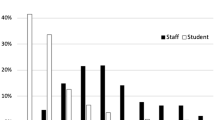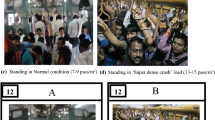Abstract
In 2009, the New South Wales government announced that it would be proceeding with a feasibility study to identify the patronage potential of a new Metro rail system for Sydney. As part of this study, a new modal choice study was undertaken to establish the role of traditional attributes such as travel times and costs (and more recently, reliability) but also somewhat neglected influences such as crowding, where the later has a critical role in the calculation of capacity needs at railway stations. This paper focuses on the commuter segment and develops a new stated choice experiment in which travellers are able to compare the proposed new Metro with existing available modal alternatives for access, linehaul and egress trip stages, with a particular emphasis on the incorporation of crowding represented by the availability of a seat vs. standing in existing and new public transport modes. We present the error component choice model together with estimates of mode-specific willingness to pay for travel time components, service frequency and crowding, that latter expressed in terms of the probability of getting a seat and the probability of avoiding standing.
Similar content being viewed by others
Explore related subjects
Discover the latest articles, news and stories from top researchers in related subjects.References
Bhat CR (2001) Quasi-random maximum simulated likelihood estimation of the mixed multinomial logit model. Transp Res, Part B, Methodol 35:677–693
Bhat CR (2003) Simulation estimation of mixed discrete choice models using randomized and scrambled Halton sequences. Transp Res, Part B, Methodol 37:837–855
Gilboa I, Schmeidler D, Wakker P (2002) Utility in case-based decision theory. J Econ Theory 105:483–502
Hensher DA (1994) Stated preference analysis of travel choices: the state of practice. Transportation 21(2):107–134
Hensher DA (2010) Attribute processing, heuristics and preference construction in choice analysis. In: Hess S, Daly A (eds) State-of art and state-of practice in choice modelling. Emerald, Bradford, pp 35–70
Hensher DA, Rose JM, Greene WH (2005) Applied choice analysis: a primer. Cambridge University Press, Cambridge
Hess S, Train KE, Polak JW (2005) On the use of a modified Latin hypercube sampling (MLHS) approach in the estimation of a mixed logit model for vehicle choice. Transp Res, Part B, Methodol 40(2):147–163
Kahnemann D, Tversky A (1979) Prospect theory: an analysis of decisions under risk. Econometrica 47(2):263–291
Krinsky I, Robb AL (1986) On approximating the statistical properties of elasticities. Rev Econ Stat 68:715–719
Krinsky I, Robb AL (1990) On approximating the statistical properties of elasticities: a correction. Rev Econ Stat 72(1):189–190
Louviere JJ, Hensher DA, Swait JF (2000) Stated choice methods and analysis. Cambridge University Press, Cambridge
Pepper J, Spitz G, Adler T (2003) Customer perspectives on multilevel coaches for increasing rail system capacity. Transp Res Rec 1838:19–29
Polydoropoulou A, Ben-Akiva ME (2001) Combined revealed and stated preference nested logit access and mode choice model for multiple mass transit technologies. Transp Res Rec 1771:38–45
Rose JM, Bliemer MC, Hensher DA, Collins AT (2008) Designing efficient stated choice experiments in the presence of reference alternatives. Transp Res, Part B, Methodol 42(4):395–406
Starmer C (2000) Developments in non-expected utility theory: the hunt for a descriptive theory of choice under risk. J Econ Lit XXXVIII:332–382
Train K (2003) Discrete choice methods with simulation. Cambridge University Press, Cambridge
Whelan G, Crockett J (2009) A stated strength-of-preference investigation of the willingness to pay to reduce rail overcrowding. Paper presented at the 1st international conference on choice modelling conference, Harrogate, UK
Author information
Authors and Affiliations
Corresponding author
Electronic Supplementary Material
Below is the link to the electronic supplementary material.
Rights and permissions
About this article
Cite this article
Hensher, D.A., Rose, J.M. & Collins, A.T. Identifying commuter preferences for existing modes and a proposed Metro in Sydney, Australia with special reference to crowding. Public Transp 3, 109–147 (2011). https://doi.org/10.1007/s12469-010-0035-4
Published:
Issue Date:
DOI: https://doi.org/10.1007/s12469-010-0035-4




